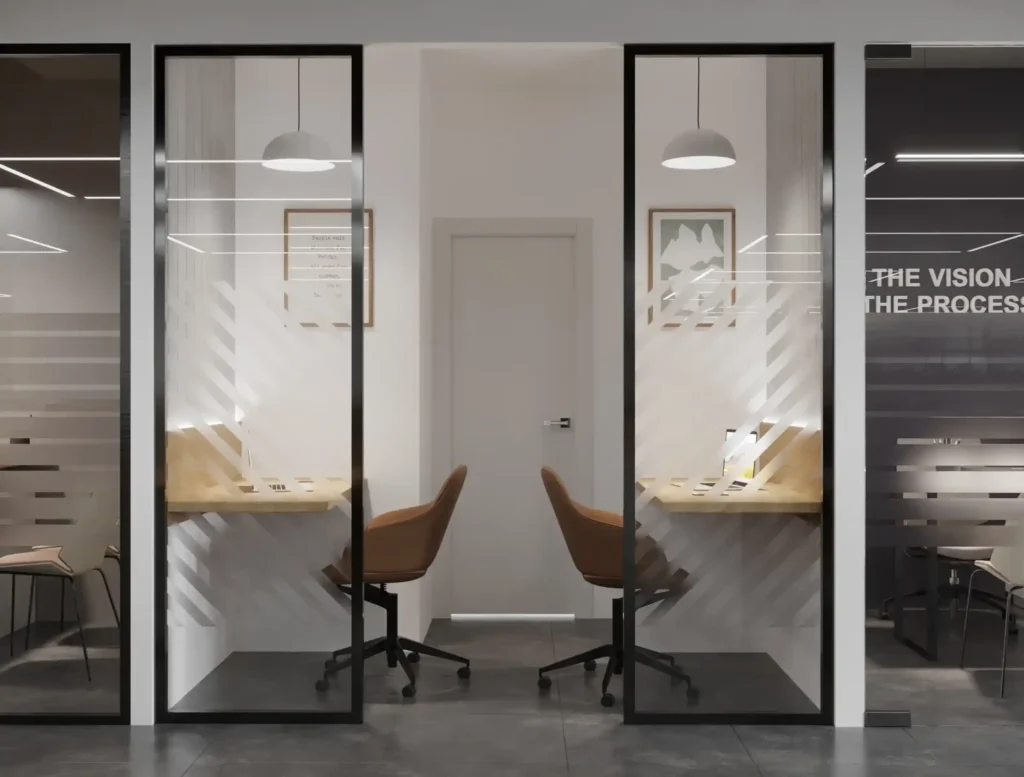Introduction
When it comes to retail spaces, first impressions matter. The way a store is designed influences not only the shopper’s experience but also their perception of the brand. A well-designed retail space can turn ordinary shopping into an experience, drawing in customers, encouraging them to stay longer, and ultimately, enhancing sales. Commercial interior design plays a crucial role in creating such environments, and a skilled interior designer in Bangalore or an interior design company in Bangalore can bring innovative ideas to life, transforming a simple store into a shopper’s paradise.
Why Retail Interior Design Matters
The interior design of a retail space is not just about aesthetics; it’s about creating a functional, engaging, and emotionally appealing environment that aligns with the brand identity. A well-thought-out retail design enhances the customer journey, promotes brand values, and ultimately drives sales. When done right, interior design can lead to an increase in foot traffic, customer retention, and conversion rates.
Here’s why retail interior design matters:
- First Impressions Matter: The layout and design of a store immediately communicate the brand’s identity. Customers make snap judgments about a brand based on the store’s design, influencing their buying decisions.
- Customer Engagement: Thoughtful design can encourage customers to explore the space, increasing the likelihood of impulse purchases. Engaging elements such as interactive displays or clear signage can improve the shopping experience.
- Efficient Use of Space: Commercial retail spaces often have limited square footage. Proper space planning allows a store to display more products while maintaining an open, airy feel.
- Emotional Connection: Design elements like lighting, color, and textures can evoke emotions and create a sense of belonging. This connection can significantly influence purchasing behavior and brand loyalty.
Key Elements of Successful Retail Interior Design
Creating a shopper’s paradise requires more than just choosing the right colors and furniture. A skilled interior design company in Bangalore focuses on several critical aspects to ensure the space not only looks good but also functions efficiently. Here are some essential elements of successful retail interior design:
- Layout and Flow
- Zoning: Divide the space into distinct zones based on product categories or customer experience stages (e.g., entrance, browsing, checkout). Zoning helps create a seamless shopping experience and guides customers naturally through the store.
- Flow and Navigation: Ensure the layout encourages smooth movement. Avoid cluttered aisles and create clear pathways so that customers can easily navigate the store.
- Lighting Design
- Accent Lighting: Highlight key products or displays with accent lighting. Proper lighting can draw attention to new arrivals or promotions, guiding shoppers’ attention.
- Ambient Lighting: Create a comfortable shopping atmosphere with soft, ambient lighting. The right lighting makes the store feel welcoming and encourages customers to stay longer.
- Task Lighting: In areas like dressing rooms or product displays, task lighting ensures products are well-lit and easy to examine.
- Branding Through Design
- Consistency with Branding: Every element of the store should reflect the brand’s identity, from the furniture to the color palette. Whether your brand is luxury, casual, or eco-friendly, your store’s interior design should communicate this identity.
- Logo Placement: Strategically place your logo throughout the store. This reinforces brand recognition and helps create a memorable experience for customers.
- Colors and Materials
- Color Psychology: Different colors evoke different emotions. For instance, warm tones like red and yellow stimulate excitement, while cooler tones like blue and green promote calmness and relaxation. Choose colors that align with your brand’s message and the type of shopping experience you want to create.
- Textures and Materials: Mix different materials such as wood, metal, and glass to create a dynamic, tactile experience. Materials should also be practical—durable enough to withstand high foot traffic while complementing the store’s aesthetic.
- Displays and Fixtures
- Product Displays: Use eye-catching displays to showcase your products. Creative displays encourage customers to engage with items, making them more likely to purchase.
- Modular Fixtures: Modular fixtures offer flexibility and adaptability, allowing the space to be reconfigured as needed, especially for seasonal promotions or new product lines.
- Technology Integration
- Interactive Displays: Modern retail spaces often incorporate technology like touch screens or virtual reality to enhance the shopping experience. These interactive elements can provide customers with more information about products, improve engagement, and even help with personalization.
- Smart Lighting and Temperature Control: Integrating smart technology to control lighting and temperature can enhance customer comfort and reduce energy consumption.
- Storage Solutions
- Hidden Storage: Retail spaces require efficient storage solutions that don’t detract from the customer experience. Built-in cabinets, hidden drawers, and even underfloor storage are clever ways to store inventory without cluttering the sales floor.
- Stockroom Design: The stockroom must be organized and easily accessible to ensure quick restocking of items. Proper storage planning also ensures smooth operations and minimizes disruption during busy hours.
- Sustainability
- Eco-friendly Materials: More and more consumers are drawn to businesses that embrace sustainability. Using eco-friendly materials like reclaimed wood, recycled glass, or sustainable fabrics can help reinforce your brand’s commitment to the environment.
- Energy-Efficient Design: Use energy-efficient lighting, heating, and cooling systems to reduce the store’s carbon footprint while lowering operating costs.
Creating a Memorable Customer Experience
The key to creating a shopper’s paradise lies in making the customer feel valued and engaged throughout their journey. Here’s how to enhance the customer experience through design:
- Entrance Design: The entrance should immediately capture attention and set the tone for the rest of the store. Use elements like large glass windows, attractive signage, and strategic lighting to draw customers in.
- Customer Comfort: Comfortable seating areas, accessible product displays, and well-lit dressing rooms all contribute to a positive shopping experience. Happy customers are more likely to return.
- Interactive Touchpoints: Provide opportunities for customers to interact with the store, such as touchscreens, product demos, or personalized shopping assistants.
- Clear Signage: Guide customers with easy-to-read signs that highlight product categories, sales, or directions to key areas. Well-placed signage reduces confusion and frustration.
Hiring the Right Interior Designer for Your Retail Space
Selecting the right interior designer in Bangalore is crucial for creating the perfect retail space. Here’s what to look for when choosing a designer:
- Experience with Retail Spaces: Choose a designer who has a strong portfolio of retail projects. Their expertise in creating customer-focused environments will be invaluable in making your vision come to life.
- Knowledge of the Local Market: An interior design company in Bangalore with local knowledge can help you navigate cultural preferences and understand customer behavior, ensuring the design resonates with your target audience.
- Creativity and Innovation: A good designer should bring fresh, innovative ideas to the table while staying within your brand’s identity and budget.
- Attention to Detail: Every element of the design should serve a purpose. From the choice of furniture to the layout and lighting, attention to detail ensures the space feels cohesive and polished.
Conclusion
Creating a shopper’s paradise requires more than just filling a space with furniture and products. It’s about creating an environment that excites, engages, and enhances the customer experience. From layout and lighting to branding and sustainability, every aspect of commercial interior design plays a role in shaping the retail space. Partnering with a skilled interior designer in Bangalore or an interior design company in Bangalore ensures that your vision is realized, resulting in a space that not only attracts customers but also fosters brand loyalty and drives sales.



